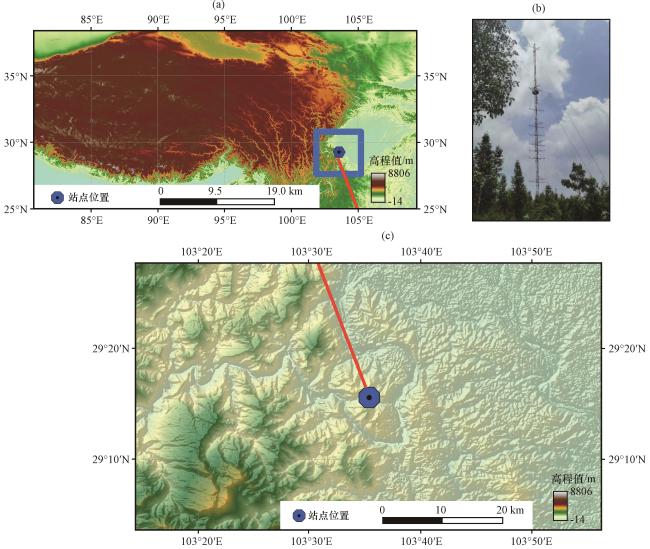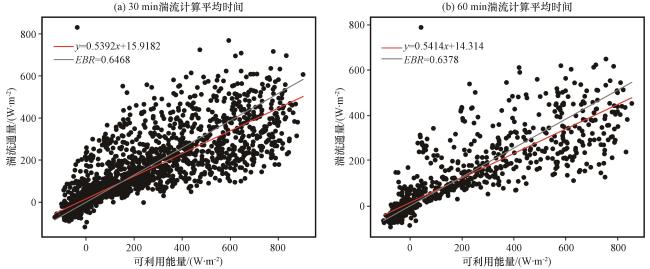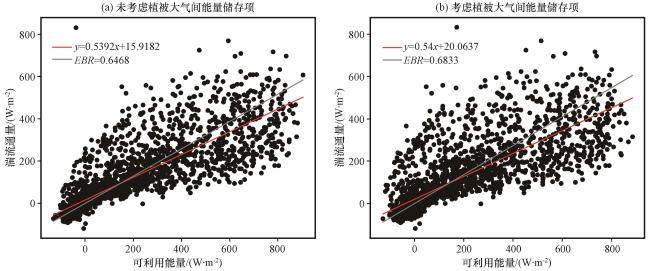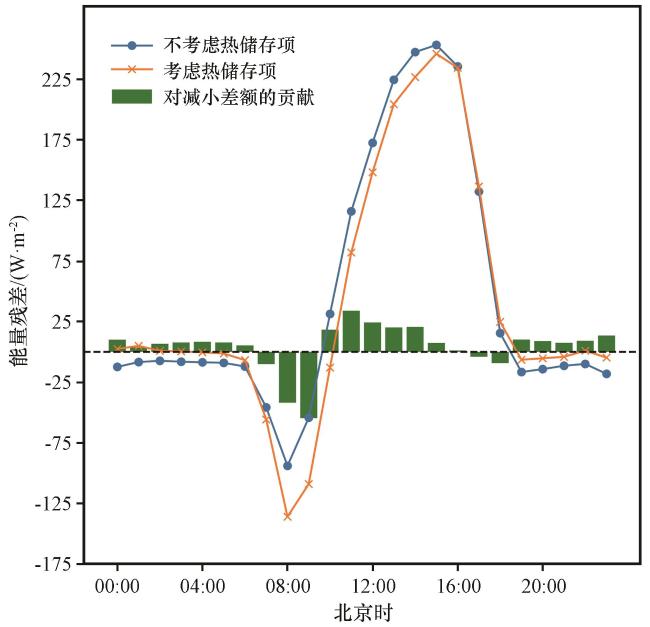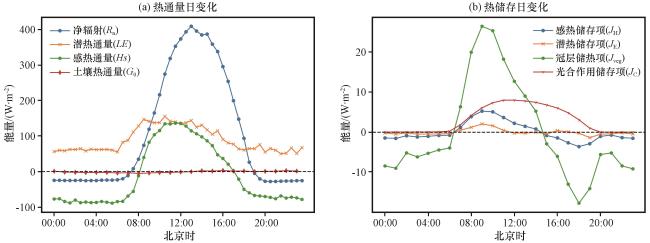1 引言
2 数据来源与方法介绍
2.1 观测场地及研究数据
2.2 数据处理
表1 生物量模型参数取值情况Table 1 Parameter values of the biomass model |
| 参数 | =1 | =2 | =3 |
|---|---|---|---|
| 0.24245 | 0.85705 | 2.39267 | |
| -0.08629 | 0.68884 | 0.2792 | |
| 0 | -1.20825 | -1.16748 |
3 结果分析
3.1 平均时间对低频涡旋贡献的截断影响分析
图3 峨眉山站2022年6月4日至10月22日不同湍流通量计算平均时间下的能量闭合度(a) 30 min湍流计算平均时间, (b) 60 min湍流计算平均时间 Fig.3 Energy closure of Mount Emei Station under the different calculated average time of turbulent fluxes from June 4 to October 22, 2022.(a) under 30 min calculated average time of turbulent fluxes, (b) under 60 min calculated average time of turbulent fluxes |
3.2 能量储存项的影响效果总体分析
图4 峨眉山站2022年6月4日至2022年10月22日不同条件下近地面能量闭合度(a) 未考虑植被大气间能量储存项, (b) 考虑植被大气间能量储存项 Fig.4 Near-surface energy closure of Mount Emei Station under different conditions from June 4 to October 22, 2022.(a) The vegetation-atmosphere energy storage term is not calculated, (b) The vegetation-atmosphere energy storage term is calculated |
3.3 各能量分项影响效果分析
表2 各能量分项对地表能量分配的影响效果Table 2 Effects of energy sub-components on surface energy distribution |
| G 0 | J H | J E | J veg | J C | All | |
|---|---|---|---|---|---|---|
| 能量平衡比率(EBR)/% | 64.68 | 65.02 | 64.66 | 66.25 | 66.33 | 68.33 |
| 白天能量储存情况/(W·m-2) | 29.71 | 10.11 | 164 | 141.26 | ||
| 夜间能量储存情况/(W·m-2) | -29.88 | -10.68 | -166 |
|


